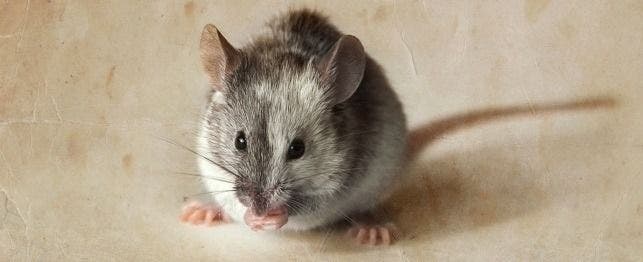
Choosing a Mouse
When you think of a traditional small pet, you might name the hamster, gerbil or even a rat. Though often overlooked, the diminutive mouse can also make an excellent pet.
Mice belong to the family Rodentia, which means ‘to gnaw’ and are thought to have originated in Asia. Through adaptation, along with prolific breeding, the mouse now has a worldwide distribution. The Swiss albino mouse is the most popular pet mouse but through breeding and selection, various colors, coat varieties and exotic species are becoming more common.
Behavior
Mice are timid, social and territorial animals. They are not strictly nocturnal, which means they are active throughout the day and night. The female makes a better pet than the male, which tends to have a strong, offensive odor. Male mice also fight among each other and shouldn’t be housed together.
Females, on the other hand, can be housed together. In fact, female mice that have been housed together are less likely to bite and show aggression than those housed alone.
Mice make good pets for children over 10 years of age. They rarely bite unless handled roughly or startled. If you handle your mouse, avoid stressing or physically harming the mouse. Be gentle but firm. To pick up a mouse, gently lift him up by the base of the tail and place the mouse in a cupped hand.
Appearance
Mice are small rodents with a furred body and sparsely furred tail. An adult mouse typically weighs about 30 grams (or just over an ounce) with males twice the size of females.
Mice have four prominent orange colored incisors that are open rooted and grow continuously. Their eyes bulge due to the presence of the harderian gland behind each eye. This gland helps lubricate the eye and is thought to play a role in pheromone related behavior. The red tinged secretions of this gland are normally not seen but in times of stress or illness, can overflow the eyes. It appears that the mouse is bleeding from the eyes.
Exotic species of mice include the spiny mouse and African pygmy mouse. Both have characteristics similar to the Swiss albino but different sizes, colors and coat varieties.
Housing
Mice gnaw on everything and are excellent escape artists, so consider these characteristics when selecting a home. Stainless steel, hard plastic and glass make the best enclosures. Wood is not a good choice. The lid needs to be securely attached to prevent escapes.
After selecting an enclosure, make sure your mouse has the right environment. Mice do not have sweat glands and cannot pant, so they are prone to overheat. The temperature should be 65 to 80 degrees Fahrenheit and 30 to 70 percent humidity. The enclosure needs to be well lighted, easy to clean and ventilated. Cage furniture should include a hide box and an exercise wheel to maintain the mouse’s mental and physical well being.
Bedding can be made from recycled paper products, citrus litter, corncob litter, aspen/oak bedding or the popular pine shavings. Cedar shavings are common but controversial. Some people feel that the aromatic oils of cedar can be irritating.
Thoroughly clean and scrub the cage, furniture and food bowls at least once a week. Vinegar can be used to remove the scales commonly deposited by rodent urine.
Feeding
The two primary commercially available foods are seeds or rodent blocks, but seeds are less nutritious and are not recommended. Sunflower seeds in particular have a high fat content and should be limited and only offered as treats to avoid obesity. Rodent or lab blocks are preferable to seeds because they are more nutritionally complete.
Food should be available at all times and placed in either a dish or hopper. Supplemental vitamins or minerals are not needed with a nutritionally complete diet. If you offer table scraps, give them only in limited amounts. Whole wheat bread, nonfat yogurt, fresh fruits and vegetables are the healthiest food additives.
Provide water in sipper bottles at all times. The bottles should be cleaned daily and checked for clogs. Once a week, the bottle should be thoroughly scrubbed.
Breeding
Mice are typically bred in harems, with one male and several females. As mentioned earlier, housing males together will lead to fighting. Female mice should not be bred before they are 50 days of age. Mice are quite prolific breeders and come into heat every 4 to 5 days throughout the year if not bred. The female can even come back into heat 14 to 28 hours after giving birth.
Pregnancy lasts about 3 weeks and litter sizes average 10 to 12. Though mutilation and cannibalism are uncommon in the mouse, it is a good idea to leave the mother mouse and her brood alone for at least 2 to 3 days after birth to limit stress. The male is typically removed when pregnancy is confirmed to reduce the risk of impregnating the female immediately after birth. Pups are weaned at 3 weeks of age.
Common Diseases and Disorders
- Overgrown incisors
- Tumors
- Pneumonia
- Tyzzer’s disease
- Fighting wounds
- Viral infections
- Parasitic infections